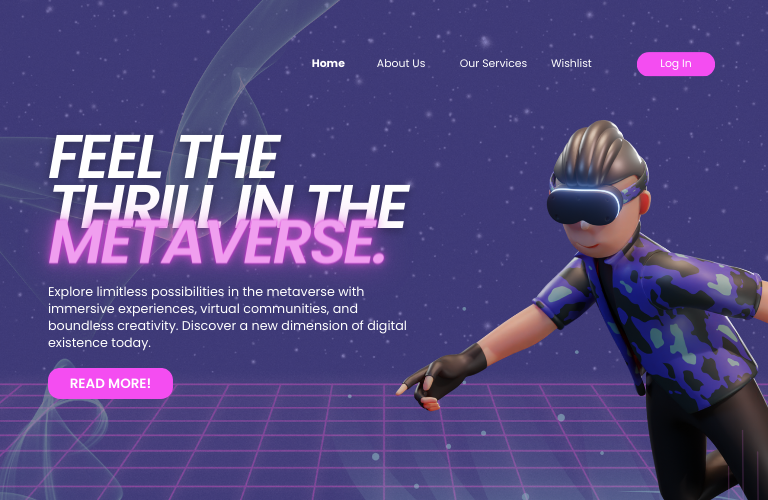I. Introduction
A. Definition of the Metaverse Platforms : The metaverse Platform, a concept born from science fiction, refers to a collective virtual shared space, merging physical reality with virtual environments.
B. Importance of Metaverse Platforms : Metaverse platforms offer immersive experiences, social interactions, and commercial opportunities, shaping the future of digital communication and commerce.
II. Factors Influencing Development Costs
A. Scope and Complexity : The intricacy and scale of features determine the development effort and associated costs.
B. Technology Stack : Choice of programming languages, frameworks, and tools impacts development efficiency and expenses.
C. Design and User Interface : Investment in intuitive design and user experience enhances engagement but incurs additional design costs.
D. Integration of VR and AR : Incorporating virtual and augmented reality technologies requires specialized development and hardware integration, increasing project costs.
E. Security Measures : Implementing robust security measures safeguards user data and platform integrity, necessitating investment in security solutions.
F. Scalability : Designing scalable architecture from the outset minimizes future expenses associated with accommodating user growth.
G. Content Creation Tools : Developing tools for user-generated content enriches platform engagement but adds to development costs.
III. Cost Components Breakdown
A. Development Team Expenses
1. Developers : Highly skilled developers command higher salaries, influencing overall project expenses.
2. Designers : Talented designers contribute to captivating user experiences, impacting development costs.
3. Project Managers : Efficient project management ensures timely delivery but requires budget allocation.
4. Quality Assurance : Comprehensive testing and quality assurance measures ensure platform reliability, necessitating resource allocation.
B. Infrastructure Costs
1. Hosting : Cost of hosting services depends on platform requirements and scalability needs.
2. Server Maintenance : Ongoing server maintenance ensures platform performance and reliability, contributing to operational expenses.
3. Bandwidth : Bandwidth costs scale with platform usage and data transfer requirements, affecting operational expenditure.
C. Licensing Fees
1. Software Licenses : Procuring licenses for development tools and software components adds to project costs.
2. Third-Party Services : Utilizing third-party services for specialized functionalities incurs licensing fees, impacting project expenses.
D. Marketing and Promotion
1. Advertising : Marketing efforts to promote platform visibility and attract users require budget allocation.
2. Public Relations : Building brand reputation through public relations activities involves financial investment.
IV. Case Studies: Examples of Development Costs
A. Social VR Platform
B. E-commerce Metaverse
C. Educational Virtual Environment
V. Strategies to Minimize Costs
A. Prioritizing Features : Identifying and prioritizing essential features minimizes development scope and associated costs.
B. Resource Optimization : Efficient resource allocation and utilization streamline development processes and reduce expenses.
C. Agile Development : Adopting agile methodologies facilitates iterative development, optimizing resource allocation and minimizing project overheads.
D. Open Source Solutions : Leveraging open-source technologies and libraries reduces software licensing costs.
E. Long-Term Planning : Strategic long-term planning anticipates future requirements and minimizes unforeseen expenses.
VI. Future Trends and Predictions
A. Technological Advancements : Continued technological advancements will drive innovation and potentially reduce development costs.
B. Impact of Blockchain and NFTs : Integration of blockchain and non-fungible tokens (NFTs) may introduce new revenue streams and cost-saving opportunities.
C. Industry Adoption : Increased adoption of metaverse platforms across industries will shape development practices and cost dynamics.
VII. Conclusion
In conclusion, the cost of developing a metaverse platform in 2024 depends on various factors, including scope, technology, design, and marketing. By understanding these factors and employing cost-saving strategies, businesses can navigate the complex landscape of metaverse development while maximizing return on investment. As technology evolves and industry adoption grows, the cost dynamics of metaverse development are expected to evolve, presenting new challenges and opportunities for innovation.




